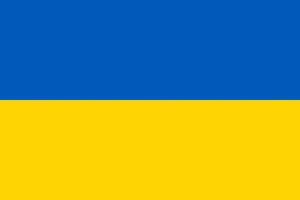Difference between revisions of "Language/Ukrainian/Culture/Traditions"
m (Quick edit) |
m (Quick edit) |
||
| Line 55: | Line 55: | ||
<span gpt></span> <span model=gpt-3.5-turbo></span> <span temperature=1></span> | <span gpt></span> <span model=gpt-3.5-turbo></span> <span temperature=1></span> | ||
==Videos== | |||
===Spox Vox: Pysanka, the Traditional Ukrainian Easter Egg - YouTube=== | |||
<youtube>https://www.youtube.com/watch?v=vXF4_hc3edo</youtube> | |||
{{Ukrainian-Page-Bottom}} | {{Ukrainian-Page-Bottom}} | ||
Revision as of 15:46, 22 March 2023
As a Ukrainian language teacher with 20 years of experience, I strongly believe that one cannot fully understand or appreciate Ukrainian language without learning about Ukrainian culture. Ukrainian traditions and holidays are an integral part of Ukrainian culture, and learning about them is essential to becoming proficient in Ukrainian language. In this lesson, we will explore traditional Ukrainian customs, rituals, and celebrations, and understand the importance of these traditions in Ukrainian culture.
Ukrainian Traditions
Ukrainian traditions are deeply rooted in history and culture, and reflect the country's unique heritage. One of the most important aspects of Ukrainian traditions is the emphasis on family and community. Ukrainians place great value on family and the extended family, and many traditions focus on strengthening family ties and celebrating together. Here are some of the most common Ukrainian traditions:
Kolyadky and Shchedrivky
Kolyadky and Shchedrivky are traditional carols that are sung during the Christmas season. Kolyadky are religious carols, sung in praise of the birth of Jesus, while Shchedrivky are more secular, sung to wish good health and prosperity for the upcoming year. The tradition of singing carols is very important in Ukrainian culture, and many families and communities continue to sing them together.
Easter Traditions
Easter is the most important religious holiday in Ukraine, and is celebrated with many colorful traditions. One of the most important traditions is the painting of eggs, which are believed to bring good luck and health. The eggs are painted with intricate designs and bright colors, and are often given as gifts. Another important tradition is the blessing of food, where families bring baskets of food to church to be blessed by the priest.
Wedding Traditions
Ukrainian weddings are rich in tradition, with many customs and rituals that date back many years. One of the most important traditions is the 'vykup', where the groom must pay a ransom to the bride's family to show that he is worthy of her. Another important tradition is the 'korovai', a traditional bread that is baked for the wedding and decorated with symbolic patterns and designs.
Varenyky and Holubtsi
Varenyky and Holubtsi are traditional Ukrainian dishes that are enjoyed by many. Varenyky are dumplings that are filled with potato, cabbage, or cheese, while Holubtsi are stuffed cabbage rolls. These dishes are often served during holidays and special occasions, and are a symbol of Ukrainian culture and tradition.
Ukrainian Celebrations
Ukrainians love to celebrate, and there are many holidays and festivals throughout the year. Some of the most important celebrations include:
Christmas
Christmas is one of the most important holidays in Ukraine, and is celebrated with many traditions and festivities. Ukrainians celebrate Christmas on January 7th, and the celebrations usually start on Christmas Eve. One of the most important traditions is the 'Sviata Vecheria', or Holy Supper, where families gather to share a special meal and sing carols.
Independence Day
Independence Day is celebrated on August 24th, and marks Ukraine's independence from the Soviet Union in 1991. The celebrations include parades, fireworks, and concerts, and are a symbol of Ukraine's national pride and independence.
Ivan Kupala Day
Ivan Kupala Day is celebrated on July 7th, and is a celebration of the summer solstice. The celebrations include bonfires, music, and dancing, and many young couples use this day to express their love and make wishes for the future.
Malanka
Malanka is a traditional Ukrainian celebration that is held on January 13th, and marks the beginning of the New Year according to the Julian calendar. The celebrations include music, dancing, and many traditional foods, and are a symbol of Ukrainian culture and tradition.
Conclusion
Ukrainian traditions and celebrations are an essential part of Ukrainian culture, and understanding them is crucial for anyone who wants to learn Ukrainian language. By learning about Ukrainian traditions and celebrations, you will gain a deeper understanding of Ukrainian culture and heritage, and be able to communicate more effectively with native speakers. I encourage all learners of Ukrainian language to explore these traditions and celebrations, and to experience the richness and diversity of Ukrainian culture.
Videos
Spox Vox: Pysanka, the Traditional Ukrainian Easter Egg - YouTube
